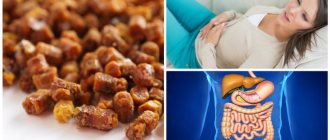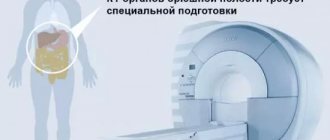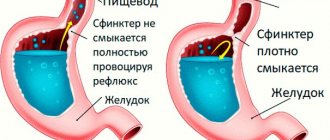Causes of the disease
The most common cause of gastritis is infection with the bacteria Helicobacter pylori. These are one of the few microorganisms that can survive in the aggressive environment of gastric juice. Other causes of the disease usually include:
- The effect of chemical irritants (in particular, alcohol and some medications with prolonged use).
- Chronic stress.
- Parasitic infections.
- Autoimmune processes are damage to mucosal cells by cells of the immune system.
- Reflux of bile acids into the stomach (reflux gastritis).
- Identification of the etiological factor is important, since the treatment tactics of the disease depend on it.
Main signs and causes of stomach ulcers
04.05.2021
An ulcer is the appearance of damage in the wall of the stomach . During the disease, ulcers often affect the duodenum. The spread of a stomach ulcer is fraught with life-threatening complications.
Reasons for development
Malfunctions in the body that negatively affect the connection between aggressive factors of the stomach and the protective mechanisms of the mucous membrane of the stomach and duodenum.
Factors of aggression include an increase in the production of hydrochloric acid in the stomach , the formation of bile acids in the liver and their entry into the duodenum, and the penetration of the contents of the duodenum into the stomach .
These elements, as a rule, destroy the mucous substance that is produced by the cells of the mucous membrane.
Infection with the bacterium Hylacobacter pylori.
Bacteria actively contribute to the development of ulcers . They negatively affect the mucous membrane of the stomach and duodenum at the same time on both sides. Various enzymes that can damage the protective function of the mucosa are produced by microorganisms. In addition, bacteria and microbes create cytotoxins.
When these microorganisms spread, there is an increase in gastrin levels and increased secretion of hydrochloric acid.
Factors influencing the progression and worsening of the disease:
- prolonged nervous tension and stress;
- high acidity of digestive juice;
- chronic form of gastritis or gastroduodenitis;
- unbalanced diet;
- alcohol consumption;
- smoking;
- frequent use of certain medications (acetylsalicylic acid, butadione, indomethacin);
- genetic predisposition.
Symptoms of a stomach ulcer
Painful sensations appear at different times of the day. They are able to take the patient by surprise after eating food, after 30-60 minutes or after 2-3 hours. The pain may also begin at night and before meals. In certain cases, ulcer sufferers feel better after eating.
An exacerbation is characterized by sour belching , nausea , constipation or vomiting of acidic stomach . Patients often induce vomiting to feel better.
People with ulcers often lose weight dramatically because they rarely eat so as not to experience pain.
Spring and autumn are frequent periods of exacerbation of pain.
Overexertion, treatment with medications that reduce blood , and consumption of alcoholic beverages contribute to the appearance of serious complications in the form of bleeding, perforation and penetration of ulcers , the formation of stenosis , and malignancy of the disease.
The final diagnosis is established only through a medical examination.
Treatment of stomach ulcers
Complex therapy . It is necessary to take medications in a timely manner and adhere to a diet , eliminate smoking and drinking alcohol, stop taking medications that have an ulcerogenic effect, and establish a daily routine.
When patients have an uncomplicated ulcer , it is possible to choose a conservative method of treatment with drugs that can reduce the level of gastric .
If a peptic ulcer is caused by the bacteria Hilacobacter pylori, then treatment is carried out with the help of antibacterial drugs.
Patients who experience ulcerative bleeding immediately undergo gastroduodenoscopy.
All ulcer sufferers are prescribed therapy with a special diet .
Six fractional meals a day gives a positive result and improves the functioning of the gastrointestinal tract. Patients need healthy food. Store-bought food with added chemicals, as well as fried, smoked and baked foods, are not suitable.
The same applies to products that irritate the gastric and stimulate the secretion of hydrochloric acid.
It is worth replacing fatty and spicy foods with food that binds and neutralizes hydrochloric acid.
Prevention of stomach ulcers
Necessary measures:
- following a diet , excluding coffee and other drinks that cause harm rather than benefit;
- maintaining hygiene;
- regular treatment and brushing of teeth to be able to finely chop food;
- acidity regulation;
- restoring the balance of gastric juice with a protective environment;
- lack of mental and psychological stress and stress;
- avoidance of smoking and alcohol consumption;
- regular examination and treatment of gastrointestinal diseases;
- taking tests .
A complex approach:
- healthy food in the diet;
- comfortable living conditions and frequent cleaning of the household;
- physical activity;
- adequate sleep and a constant daily routine.
a gastroenterologist every year for 5 years after an extreme exacerbation.
Published in Gastroentorology Premium Clinic
Types of disease
Currently, there are several classifications of gastritis. Based on the nature and extent of the lesions, the following common forms of pathology are distinguished:
- Superficial is the safest form of gastritis, in which the mucous and inner lining of the stomach becomes inflamed.
- Chronic superficial - repeated inflammation of the mucous membrane. Chronic gastritis is characterized by periods of remission and exacerbation.
- Atrophic – a severe form of chronic gastritis, leading to atrophic changes in the mucosa.
- Erosive is a form of gastritis in which the inflammatory process is accompanied by the appearance of erosions (superficial damage).
- Anacidic - with low acidity, which is characterized by atrophy of gastric cells.
Symptoms
All types of gastritis are characterized by the following symptoms:
- Painful sensation in the epigastric region. Most often, pain occurs on an empty stomach, after eating, or during long breaks between meals.
- Heartburn, especially in the morning.
- Belching.
- Nausea, sometimes vomiting.
- Unpleasant taste and odor from the mouth.
Different types of the disease are characterized by certain features of the course. Let's take a closer look at the symptoms of the most common types of gastritis.
Surface
This is the most favorable form of the disease, which is easiest to cope with provided timely and competent treatment. The main symptom of this form of gastritis is pain in the stomach.
Chronic superficial
This form of the disease is characterized by heartburn, nausea, an unpleasant taste in the mouth, and indigestion. In rare cases, patients experience vomiting.
It is noteworthy that in the superficial chronic form of the pathology, the functions of the glandular epithelium are preserved. In this regard, manifestations of increased or decreased acidity in this form of the disease rarely occur.
Atrophic
In the initial stages of the pathology, the course of the disease resembles gastritis with low acidity. Sometimes atrophic gastritis manifests itself with symptoms of B12 deficiency anemia. This is due to the fact that during the pathological process, not only the epithelial and glandular cells of the stomach are destroyed, but also the cells that are necessary for the absorption of cyanocobalamin (vitamin B12). One of the characteristic symptoms of atrophic gastritis is a feeling of heaviness after eating (even after a small portion of food).
Due to low acidity, a person quickly loses weight. In addition, with atrophic gastritis, weakness, loss of appetite and dizziness are often observed.
Erosive
The symptoms of this form are in many ways similar to other types of gastritis. For this reason, diagnosing erosive gastritis is difficult. One of the distinguishing symptoms of the erosive form is gastric bleeding. Otherwise, the symptoms are the same as with other forms of gastritis. These are pain in the epigastric region, heartburn, belching, nausea, sometimes vomiting and stool disorder (diarrhea or constipation).
Important. During exacerbations of the erosive form of the pathology, a person may experience severe vomiting with discharge of blood clots.
Chronic anacid
In most cases, chronic anacid gastritis in the initial stages is asymptomatic. However, as the disease progresses, a person experiences the following symptoms:
- Pain and discomfort in the stomach area. As a rule, these are dull or aching painful sensations or a feeling of heaviness.
- Stool disorder - constipation or diarrhea.
- Weakness and increased fatigue.
- Loss of body weight. This is due, first of all, to reduced stomach acidity, against the background of which the absorption of nutrients in the intestines noticeably worsens.
- Nausea, sometimes vomiting with bile.
- Reduced blood pressure.
- Flatulence - bloating.
- Changing taste preferences. Often with anacid gastritis, a person develops an aversion to milk and dairy products.
- Bad breath.
Figure 1: What a healthy and gastritis-affected stomach looks like. Source: macrovector/Depositphotos
When to see a doctor
Gastritis is a disease that requires accurate diagnosis with the obligatory establishment of the form of the disease. Many people neglect medical care in the initial stages of pathology, thereby making a big mistake.
The initial forms of gastritis, when there is slight inflammation of the mucous membrane and mild symptoms, respond well to treatment. Therefore, at the first signs you need to consult a doctor. With chronic gastritis, it is important to follow all doctor’s instructions, and you should contact a doctor if symptoms of exacerbation occur. It is important to monitor the dynamics of the disease.
Symptoms of exacerbation of chronic gastritis
Patients suffering from chronic forms of the disease must clearly identify signs of exacerbation. This is important for making the right decisions and contacting a doctor in a timely manner. As a rule, the symptoms of an exacerbation are difficult to miss or confused with other acute diseases. If you know about your diagnosis, then the following symptoms indicate an exacerbation of gastritis:
- Cutting pain in the abdomen. As a rule, pain intensifies after eating or during a long break between meals. Acute pain in the exacerbation phase is periodic or constant (extended over time) in nature.
- Nausea. After eating, a person is bothered by severe belching, heartburn, nausea, and sometimes vomiting.
- Stool disorder. Both constipation and diarrhea (diarrhea) are possible.
- Dry mouth, for example due to dehydration due to diarrhea. Or increased salivation - periods of exacerbation may be accompanied by high activity of the salivary glands.
- General symptoms. During an exacerbation, symptoms such as weakness, fever, dizziness and headache are possible.
Important. In many patients, the symptoms of exacerbation are pronounced. For example, this is severe vomiting with mucus and blood clots. The last symptom indicates a gastric ulcer and open gastric bleeding. Due to blood entering the gastrointestinal tract, the stool becomes black. In some cases, an exacerbation is accompanied by such frightening symptoms as loss of consciousness, a sharp decrease in pulse and shallow breathing. In this case, the patient needs to call an ambulance and go to the hospital.
Differentiation with other diseases and symptoms
Gastritis has a variety of symptoms, so it is necessary to undergo additional examinations before starting treatment to establish an accurate diagnosis.
Diagnosis of the disease includes endoscopy, fibrogastroscopy with taking samples for biopsy.
The latter, despite its invasiveness, is a highly informative method for detecting not only the stages of gastritis, but also its complications. Laboratory methods include serological reactions, detailed and biochemical blood tests.
To differentiate from functional dyspepsia, doctors take into account a number of factors:
- Duration and frequency of symptoms. Gastritis is characterized by a duration of at least 12 weeks throughout the year.
- Endoscopy allows you to determine biliary dyskinesia and exclude organic damage to the gastrointestinal tract.
- Tracing the connection between irritable bowel syndrome and bowel movements.
Clinical picture:
- The disease occurs with low and high acidity. When elevated, heartburn and sour belching occur; Low acidity causes rotten burps. Using these specific signs, you can determine the acid-base environment of the stomach.
Heartburn is mainly characteristic of patients with gastritis with high acidity
- Pain in the epigastric region will be acute in the primary case and dull, bursting in the chronic course.
- A characteristic difference between gastritis and ulcers or duodenitis will be increased pain after eating.
- Weakness and dizziness occur against the background of severe intoxication, as well as as a vegetative syndrome.
- If it lasts for a long time, polyhypovitaminosis is possible, as a result of which teeth marks remain on the tongue, seizures in the corners of the mouth, peeling of the skin, dryness and brittle hair are observed.
- Loss of appetite and perversion of taste sensations.
- Vitamin deficiency as a result of poor absorption of food.
- Asthenic syndrome, which occurs more often in females.
According to statistical data, in percentage terms, the frequency of occurrence of symptoms is as follows: 70% of patients complain of pain and discomfort in the epigastric region, dyspeptic disorders are observed in 69%. Nausea, vomiting, and belching occur in 100% of cases.
The most characteristic symptom of gastritis is discomfort in the epigastric region
The acute period lasts from 1-3 days. If additional uncharacteristic symptoms occur, it is necessary to exclude an atypical form of myocardial infarction.
Features of the clinical picture in chronic course
The pain is localized near the navel, in the right hypochondrium. Occurs more often after eating, intensifies with severe violation of the diet. She has a dull, whining character. In the morning the patient feels sick and has a bitter taste in the mouth. The combination of symptoms makes a person irritable, and as a result, memory and attention are impaired.
Patients are perplexed by the appearance of headaches and dizziness with gastritis, which are not combined with the main signs of the disease. Indeed, these symptoms are somewhat specific. There are several causes of dizziness with gastritis:
- Consequence of intoxication. In such cases, the temperature rises to 38 ºС, repeated vomiting, diarrhea and increasing weakness develop. In acute cases, dizziness is a signal of complications of the process and the addition of a bacterial infection.
- Asthenovegetative syndrome. Women are more susceptible to it because of their inherent emotionality. In this case, dizziness is accompanied by other vegetative manifestations: chills, irritability, impaired thermoregulation, causeless attacks of nausea, etc.
Asthenic syndrome may develop as a result of chronic gastritis
- Reflex pain occurs due to the spread of pain in the stomach to other organs and systems. Dizziness is caused by headache.
Diagnostics
If gastritis is suspected, diagnostic measures are aimed not only at identifying the disease, but also at determining its form, as well as other dysfunctions of the gastrointestinal tract. The range of diagnostic measures includes:
- Examination and history taking. The patient is examined and complaints are analyzed. This is one of the most important diagnostic stages, at which the doctor can make a presumptive diagnosis and plan a further scheme of instrumental and laboratory tests. Therefore, it is extremely important to accurately describe your symptoms and answer your doctor's questions.
- Endoscopy. An endoscopic examination is performed to assess the condition of the gastric mucosa. During the study, a small fragment of the mucosa may be taken for histological examination. Histology allows us to assess the nature of changes in the mucosa, as well as establish the presence of a bacterial pathogen (Helicobacter pylori).
Figure 2. Preparing the endoscope for the procedure. Source: Kzenon / Depositphotos
- Breathing tests. This study allows us to clarify the presence of Helicobacter pylori. The essence of the test is to take urea orally. Then, using a gas analyzer, the level of ammonia in the exhaled air is determined.
- Laboratory research. If gastritis is suspected, general and biochemical blood tests are performed. The patient should also undergo a urine test and stool test. In particular, stool is tested for Helicobacter pylori and occult blood.
- Ultrasonography. An ultrasound is performed to assess the condition of internal organs - pancreas, liver, gallbladder.
- Determination of pH. The level of acidity in the stomach is determined using intragastric pH-metry.
- Electrogastroenterography and manometry. These are instrumental techniques that allow you to assess the motor function of the stomach and the level of pressure in the stomach and intestines.
How to treat gastritis
Treatment is selected depending on the type of disease, concomitant pathologies, the patient’s age and a number of other features. The basis of treatment for almost all types of gastritis is diet in combination with pharmacotherapy. Medicines are selected depending on the level of stomach acidity and the etiological factor.
Features of treatment of different types of gastritis
There is much in common in the treatment of gastritis, but each type has its own nuances. In this regard, independent treatment is unacceptable. The doctor selects an individual treatment regimen depending on a number of factors. Let us consider in more detail the features of treatment of various types of disease.
Surface
Treatment of superficial forms of gastritis includes mandatory diet therapy and drug treatment. Depending on the etiological factor and a number of other features, drug therapy may include taking antibiotics to eradicate Helicobacter pylori, as well as drugs that regulate acidity levels. Some patients are also prescribed coating drugs and gastroprotectors.
Chronic superficial
Treatment of the chronic form of superficial gastritis largely depends on the secretory function of the stomach. If we are talking about low acidity (which is most often observed in elderly patients), then treatment table No. 2 is prescribed. The patient is prescribed drugs based on digestive enzymes, gastric juice, as well as drugs that stimulate the production of hydrochloric acid by the parietal cells of the mucosa.
In case of increased acidity, medications that normalize the acidity level are indicated. Drugs that have an enveloping and antispasmodic effect are also prescribed. If the bacterial nature of chronic superficial gastritis is established, then antibiotics are prescribed.
Chronic atrophic
Treatment of atrophic forms of pathology depends on the root cause of the disease. It is important to establish the pathogenesis of atrophic gastritis: association with Helicobacter pylori or autoimmune processes.
As with other types of gastritis, with the atrophic form, the basis of treatment is diet therapy and drug treatment. If the disease is associated with prolonged infection by Helicobacter pylori, then antibiotic therapy is carried out.
Unfortunately, with the autoimmune form of atrophic gastritis, everything is much more complicated. Currently, it is almost impossible to eliminate the autoimmune component of the disease. Glucocorticoids are usually used to suppress the activity of the immune system, but their use is only advisable in cases where the disease is accompanied by pernicious anemia (caused by a lack of vitamin B-12). In other cases, the side effects of glucocorticoids will prevail over the possible therapeutic effect.
Erosive
Most often, treatment of erosive gastritis is conservative. As in other cases, the patient is required to strictly adhere to the diet and take medications as prescribed by the doctor. In the vast majority of cases, these measures are sufficient to achieve the desired therapeutic effect.
In rare cases, with an erosive form of pathology, endoscopic hemostasis is resorted to - a surgical operation aimed at stopping gastric bleeding. In very rare cases, a patient with an erosive form of gastritis is indicated for gastrectomy - removal of the stomach.
Chronic anacid
As with the atrophic form, anacid gastritis can have both bacterial and autoimmune etiologies. Drug therapy is selected depending on the etiological factor. When it comes to Helicobacter pylori infection, amoxicillin and clarithromycin are most often used. In some cases, tetracycline antibiotics and bismuth preparations are also used to eradicate Helicobacter pylori.
As for autoimmune gastritis, treatment is symptomatic. The patient is prescribed antispasmodic and painkillers, as well as medications that stimulate gastric motility. In this case, diet remains a fundamental element of therapy.
Diet therapy
Source: lsantilli / Depositphotos
The most important condition for the successful treatment of all forms of gastritis is diet. Let's consider the fundamental rules of nutrition for this disease:
- Chew your food thoroughly. Poorly chewed food irritates the gastric mucosa, thereby aggravating the course of the disease.
- Fractional meals. If you have gastritis, you need to eat often - 5-6 times a day in small portions. At the same time, it is important to monitor your daily caloric intake so that there is no excess.
- Follow your diet. Try to eat at the same time every day. This way the body will get used to a certain regime and will know when to prepare for meals.
Diet for different forms of gastritis has much in common. For example, in almost all forms of the disease, you should not eat a lot of sour fruits and vegetables. Plant foods should only be eaten stewed, boiled or baked. You can learn more about the intricacies of diet for different types of gastritis in our material “Diet for Gastritis.”
Medicines for gastritis
Various types of drugs are used to treat gastritis. Depending on the cause of the disease, the patient is prescribed medications that regulate acidity levels, antibiotics, antispasmodics and painkillers. Let's take a closer look at these groups of drugs:
- Antacids are drugs that have a neutralizing effect on hydrochloric acid. It is advisable to use antacids for gastritis with high acidity.
- Alginates are preparations with an enveloping effect. Thanks to this effect, it is possible to reduce the aggressive effect of gastric juice on the mucous membrane. Accordingly, alginates are also used for increased stomach acidity.
- Antispasmodics are drugs that eliminate spasms. The action of these drugs is aimed at relaxing the muscles. As a rule, drugs based on drotaverine or papaverine are used among antispasmodics.
- Analgesics are painkillers used for pain of various origins.
- Antibacterial drugs - used for proven bacterial origin of gastritis caused by Helicobacter pylori. Among antibiotics, amoxicillin is often used, and tetracycline antibiotics are less commonly used. Bismuth preparations, which are used in the treatment of gastritis of infectious origin, also have anti-Helicobacter activity.
- Gastroprotectors are drugs that protect the gastric mucosa. In this case, preference is given to bismuth preparations; they perform a dual function - they protect the mucous membrane and destroy Helicobacter pylori.
- Antisecretory drugs are drugs that reduce the production of hydrochloric acid by glandular cells of the gastric mucosa. Currently, proton pump inhibitors are most often used as antisecretory drugs.
- Prokinetics are drugs that improve the motility of the gastrointestinal tract. As a rule, prokinetics are used for gastritis with low acidity. Thanks to these drugs, the patient can avoid symptoms such as nausea and vomiting.
ethnoscience
Figure 3: Avocados won't cure gastritis, but they may be a healthier choice among nutritious sources of fat.
Source: Dream79 / Depositphotos Information about traditional methods of treating diseases of the gastrointestinal tract has survived to this day. At a time when there were no modern methods of diagnosing and treating gastritis, the disease was fought with various folk remedies. Among these the following can be noted:
- oat decoction;
- aloe juice;
- sea buckthorn oil;
- propolis;
- plantain infusion;
- potato and cabbage juices.
We remind you that traditional methods can only be used as an addition to the main treatment, and only with the permission of a doctor. Self-medication in this case is unacceptable, since folk remedies are ineffective.
GASTRITIS – WHEN THE STOMACH IS “DISHAPPY”
17.Dec.2019
Gastritis is the most common disease of the gastrointestinal tract. Patients often make this diagnosis themselves. You can often hear: “I have a heaviness in my stomach, which means I have gastritis.”
And... this is the patient’s first misconception. The term gastritis is used to refer to inflammatory and structural changes in the gastric mucosa that vary in course and origin. Therefore, to establish an accurate diagnosis, guided by a feeling of heaviness, is at least incorrect. Due to many structural changes in the gastric mucosa, clinically gastritis is a long-term disease with the following symptoms: firstly, it is a pain syndrome (acute, dull, pressing), which worries and forces you to see a doctor. Pain occurs in the epigastric (or epigastric) region and usually appears 1.5 - 2 hours after eating. Secondly, there is a so-called dyspeptic syndrome, which is observed in most patients and is expressed by a burning sensation in the epigastric region (heartburn), sour belching, which indicates the reflux of stomach contents into the esophagus (reflux), and there may also be nausea and vomiting during exacerbation . Gastritis is divided into acute and chronic. Acute - inflammation of the gastric mucosa that occurs when exposed to poor quality food or the use of certain medications. Chronic gastritis is a long-term inflammatory lesion of the gastric mucosa, characterized by structural changes and disruption of the secretory, motor and endocrine (synthesis of gastrointestinal hormones) functions of the stomach.
WHAT TO DO WHEN IT'S BAD?
When you experience the first complaints, pain and/or feeling of heaviness, bloating in the abdomen, belching, sour heartburn, or feeling unwell, you should immediately consult a doctor, because gastritis can be complicated by peptic ulcers and even stomach cancer. First of all, the doctor collects an anamnesis: studies the duration of the illness, the patient’s diet, and the presence of stressful situations. In order to confirm gastritis, it is necessary to conduct a series of diagnostic and laboratory tests. The most important method in diagnosing gastritis is an endoscopic examination, in which a special probe (endoscope) equipped with a video camera is inserted into the stomach and duodenum, with which the stomach and duodenum are examined. From the most changed areas during endoscopy, a biopsy (a piece of tissue) is taken for histological examination (a method that examines the structure of the tissue to exclude cancers and precancerous diseases of the stomach). Also, endoscopy can measure the acidity of the stomach contents.
HELP IN ACHIEVEMENTS
When stopping an attack of acute gastritis, to cleanse the stomach you need to drink 2-3 glasses of water and induce vomiting. In case of chemical poisoning, gastric lavage is carried out using a thick gastric tube. Washing is carried out until the wash water is clean. During the first two days, no food is taken and a water-tea diet is prescribed. Then the diet is expanded, including slimy soups and cereals, jelly, white flour crackers, and soft-boiled eggs. To eliminate pain, antispasmodics (for example, no-spa) and antacids (for example, Gaviscon, Rennie) are used. In the treatment of chronic gastritis, much attention must be paid to changing lifestyle, trying to avoid stress, maintaining a daily routine, getting rid of bad habits (smoking, drinking alcohol), and of course following the doctor’s recommendations on diet and nutrition. In particular, exclude fried foods, rich meat and fish broths, do not overeat, eat 5-6 times a day. Do not consume foods that contribute to heartburn: strong tea, coffee, chocolate, carbonated drinks, alcohol, onion, garlic, butter. Eat boiled meat, boiled fish, steamed food, soups made from pureed cereals (rolled oats, rice). If possible, exclude cabbage, legumes, and milk from the diet - foods that contribute to flatulence. Drug therapy is prescribed by the attending physician upon completion of certain examinations and studies. Be healthy!
Irina Lazareva, general practitioner, Nyagan City Clinic
Forecasts
The prognosis for the treatment of gastritis in adults largely depends on the patient himself - his or her discipline. Unfortunately, many people neglect their diet, thereby causing complications and exacerbations.
The question of complete recovery from gastritis also depends on etiological factors. As mentioned above, bacterial forms of pathology can be treated with antibiotics. If we are talking about gastritis of an autoimmune nature, then the disease is incurable, and in this case only symptomatic treatment is possible.
Important : acute and chronic gastritis. Acute forms of gastritis are much easier to treat. Therefore, at the first acute symptoms, consult a doctor immediately. Do not allow the disease to become chronic.
Symptoms depending on the type of pathology
The acute course with the right approach and competent therapy leaves no consequences. The cause of its development may be previous infectious diseases or poisoning. In this case, the patient is bothered by severe pain, nausea and vomiting.
Chronic gastritis occurs as a complication of the first form. Its symptoms are constantly changing and are caused by long-term damage to the stomach. The pain syndrome in gastritis is not as pronounced as in acute gastritis; nausea, vomiting, dizziness are observed. The chronic form of the pathology is characterized by periods of exacerbation and remission. Another breakdown often occurs due to non-compliance with the diet or as a reaction to a stressful situation.
Prevention
Prevention of gastritis consists of following the following recommendations:
- Balanced diet.
- Body weight control.
- Quitting bad habits (smoking, alcohol abuse).
- Control of emotional state (avoidance of stress).
- Timely treatment of gastrointestinal diseases.
For patients with chronic gastritis, it is important to follow the doctor’s recommendations to avoid exacerbations and relapses. For this purpose, such people need to visit a gastroenterologist twice a year.









